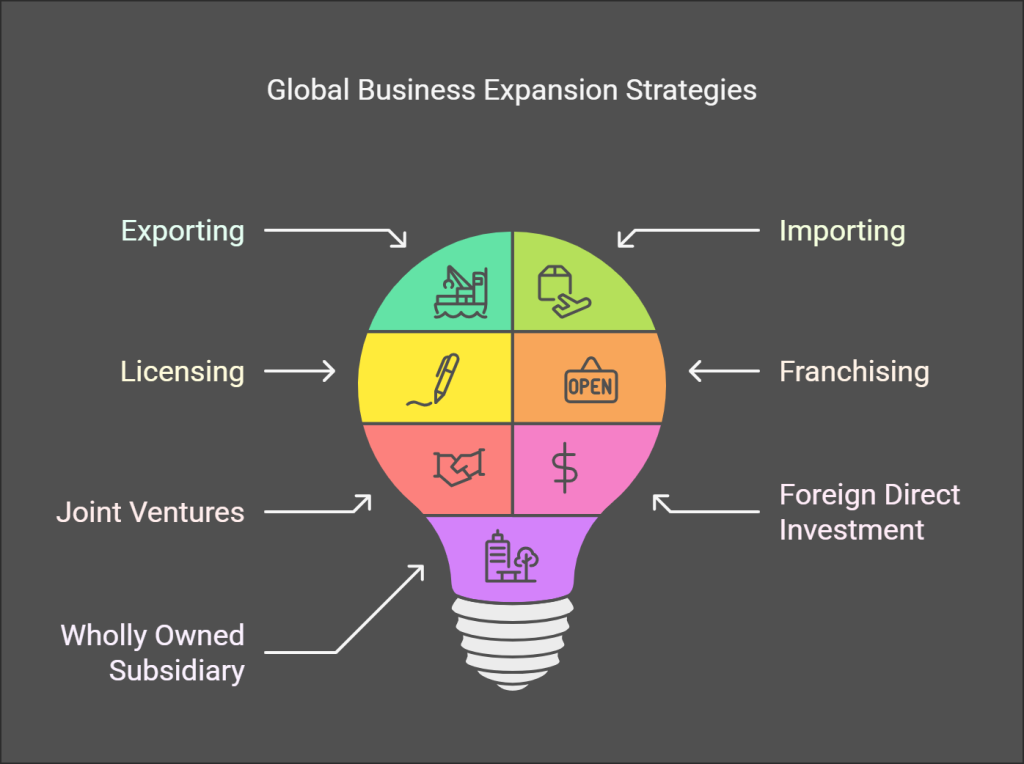The 7 Types of International Business with Examples
By John P. LaWare, CFA
- Exporting: Selling domestically produced goods to foreign markets
- Importing: Purchasing goods from foreign suppliers to resell domestically
- Licensing: Granting rights to foreign companies to manufacture and sell your products
- Franchising: Providing an entire business system to foreign operators in exchange for fees and royalties
- Joint Ventures: Partnering with foreign firms to create a new entity, sharing risks and resources
- Foreign Direct Investment: Investing directly in foreign operations, either through a new subsidiary or acquisition
- Wholly Owned Subsidiary: Establishing a foreign operation that is fully owned and controlled by the parent company

Introduction
As an experienced market analyst with over two decades covering the global economy, I’ve seen firsthand how companies of all sizes engage in international business. From the small startup sourcing components overseas to the multinational giant with operations on every continent, there are many ways to pursue opportunities beyond your home market.
In this in-depth guide, we’ll break down the seven main types of international business. I’ll share real-world examples, insights from industry leaders, and the latest data to illustrate each approach. Whether you’re a entrepreneur planning your first cross-border venture or a corporate strategist evaluating global expansion, this article will provide a framework for understanding the complex world of international business.
The 7 Types of International Business
1- Exporting
Exporting is often the first step a company takes when expanding internationally. It involves producing goods domestically and shipping them to foreign markets for sale.
Examples:
- Small businesses like Vermont-based Fat Toad Farm sell their goat’s milk caramel sauce to retailers in Japan and South Korea.[1]
- Boeing aircraft, assembled in the U.S., are flown by airlines worldwide, generating over 70% of the company’s revenue from exports.[2]
Advantages:
✓ Simplest way to enter foreign markets
✓ Lower risk than setting up overseas operations
✓ Benefits from “Made in USA” branding (for U.S. exporters)
Disadvantages:
✗ Transportation costs and tariffs can reduce profitability
✗ Less control over marketing and distribution in foreign markets
✗ Potential delays and supply chain disruptions
As Kellogg School of Management Professor Phillip Braun explains: “Exporting allows companies to increase revenue by reaching new customers, but it’s critical to carefully research target markets and understand the landed costs involved.”[3]
